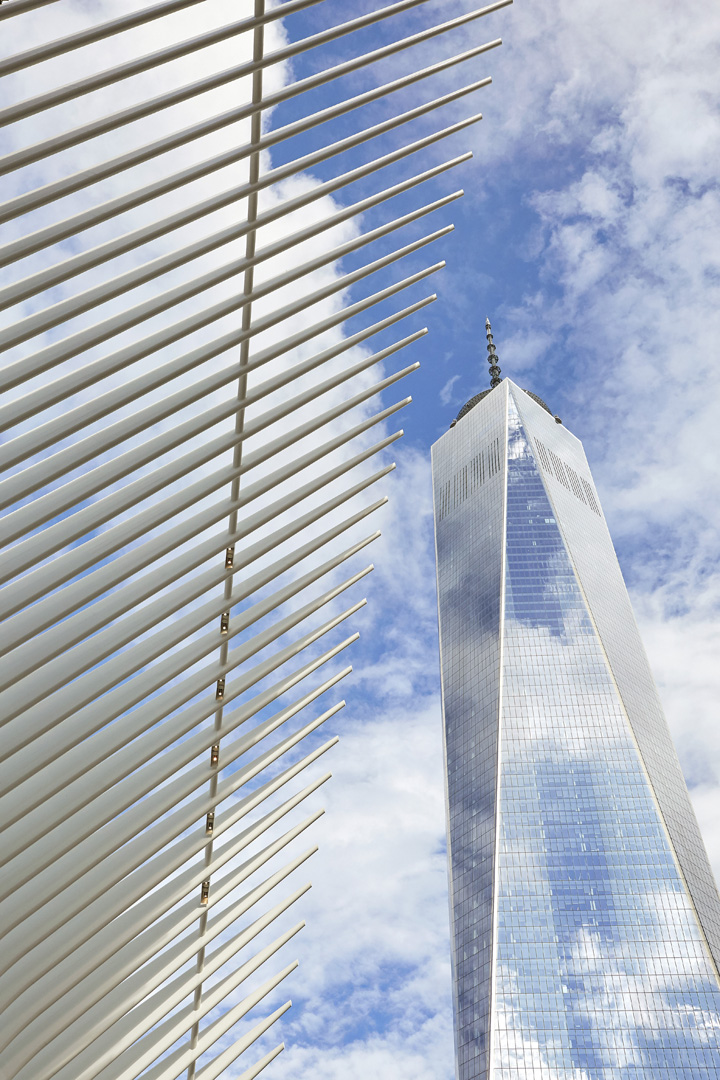The highly anticipated core of New York’s World Trade Center transportation hub has opened its doors to the public. Designed by Santiago Calatrava and rising as sculptural wings made of steel and glass, arrayed in a large elliptical shape, the building is positioned as a free standing structure and situated along the southern edge of Daniel Libeskind’s ‘wedge of light’ plaza. This organization of the site was purposely chosen to instil a pause amid the dense commercial towers. The program links the procession of green spaces extending from city hall park through the WTC transportation hub plaza to the gardens of the memorial and battery park. The piazza below, called ‘the transit hall’, is gradually being occupied by diverse retail spaces which are organized on either side of the vast atrium. This cathedral-like space is bathed in natural light, which filters through the glass skylights and down through all levels — eventually onto the PATH train platform approximately 60 feet below the street.
all photos ©Hufton + Crow

Approach towards Oculus street entrance. The Oculus, World Trade Center Transportation Hub, New York, United States. Architect: Santiago Calatrava, 2016.

Steel wing detail and One World Trade Centre. The Oculus, World Trade Center Transportation Hub, New York, United States. Architect: Santiago Calatrava, 2016.

Manhattan skyline with 9/11 memorial, oculus and high-rises. The Oculus, World Trade Center Transportation Hub, New York, United States. Architect: Santiago Calatrava, 2016.

Cathedral-like transit hall interior from viewing platform. The Oculus, World Trade Center Transportation Hub, New York, United States. Architect: Santiago Calatrava, 2016.
